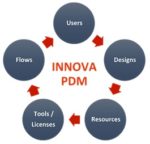You are currently viewing SemiWiki as a guest which gives you limited access to the site. To view blog comments and experience other SemiWiki features you must be a registered member. Registration is fast, simple, and absolutely free so please,
join our community today!
WP_Term Object
(
[term_id] => 157
[name] => EDA
[slug] => eda
[term_group] => 0
[term_taxonomy_id] => 157
[taxonomy] => category
[description] => Electronic Design Automation
[parent] => 0
[count] => 4357
[filter] => raw
[cat_ID] => 157
[category_count] => 4357
[category_description] => Electronic Design Automation
[cat_name] => EDA
[category_nicename] => eda
[category_parent] => 0
[is_post] =>
)
“The amateurs discuss tactics: the professionals discuss logistics.”
— Napoleon
Logistics is even more important today than it was in the early 1800’s. Further, the effectiveness of Defense systems is increasingly driven by sophisticated electronics. As the recent Ukraine conflict reveals, weapons such as precision munitions,… Read More
Register management tools have been used mostly in a bottom-up approach. There are some documents and/or spreadsheets created by the System Architects that are delivered to the design and verification teams. They then start capturing the HW/SW interface of the peripheral IPs in their in-house or commercial register management… Read More
No doubt that the design success of nowadays system on chips (SoCs) is directly linked to the success of cost control. More market opportunities are open for less expensive system on chips and electronic systems.
Both the design cost prediction and the resource tracking during the design process, are key to such a success
Predicting… Read More
Ansys is hosting IDEAS Digital Forum 2022, a no-cost virtual event that brings together industry executives and technical design experts to discuss the latest in EDA for Semiconductors, Electronics, and Photonics.
See the full online conference agenda and list of speakers at www.ansys.com/IDEAS. The free registration will… Read More
The Role of Clock Gatingby Steve Hoover on 11-28-2022 at 10:00 amCategories: EDA
Perhaps you’ve heard the term “clock gating” and you’re wondering how it works, or maybe you know what clock gating is and you’re wondering how to best implement it. Either way, this post is for you.
Why Power Matters
I can’t help but laugh when I watch a movie where the main characters are shrunk… Read More
Looking for better ways to search a huge state space in model checking, Ant Colony Optimization (ACO) is one possible approach. Paul Cunningham (Senior VP/GM, Verification at Cadence), Raúl Camposano (Silicon Catalyst, entrepreneur, former Synopsys CTO and now Silvaco CTO) and I continue our series on research ideas. As always,… Read More
A Crash Course in the Future of Technologyby Vivek Wadhwa on 11-27-2022 at 2:00 pmCategories: Cadence, EDA
One of the harshest lessons we learned during the recent pandemic is the power of exponentials. As human beings, we are linear thinkers and can’t fathom how doublings of viruses — or technologies — can be destructive and disrupt everything. In my university classes and talks to business executives, I have always had to explain… Read More
A few times a year, I check in with AMIQ EDA co-founder Cristian Amitroaie to see what’s new with their company and the integrated development environment (IDE) market for hardware design and verification. Usually he suggests a topic for us to discuss, but this time I specifically wanted to learn more about the version of their Design… Read More
The last thing you want when taping out a design is to hit large numbers of violations in signoff checks that could have been flushed out and resolved in earlier flow iterations. For implementation flows (floorplanning, synthesis, place and route), it’s usual to do a lot of flow flushing work early in the design cycle and iteratively… Read More
The differences between commercial FPGA Prototyping (“Prototyping”) and Emulation have been well documented by the purveyors of commercial Prototyping and Emulation solutions, and the technical media. What has received less coverage is how Prototyping benefits differ from Emulation benefits. Both are intended to reduce… Read More










Quantum Computing Technologies and Challenges